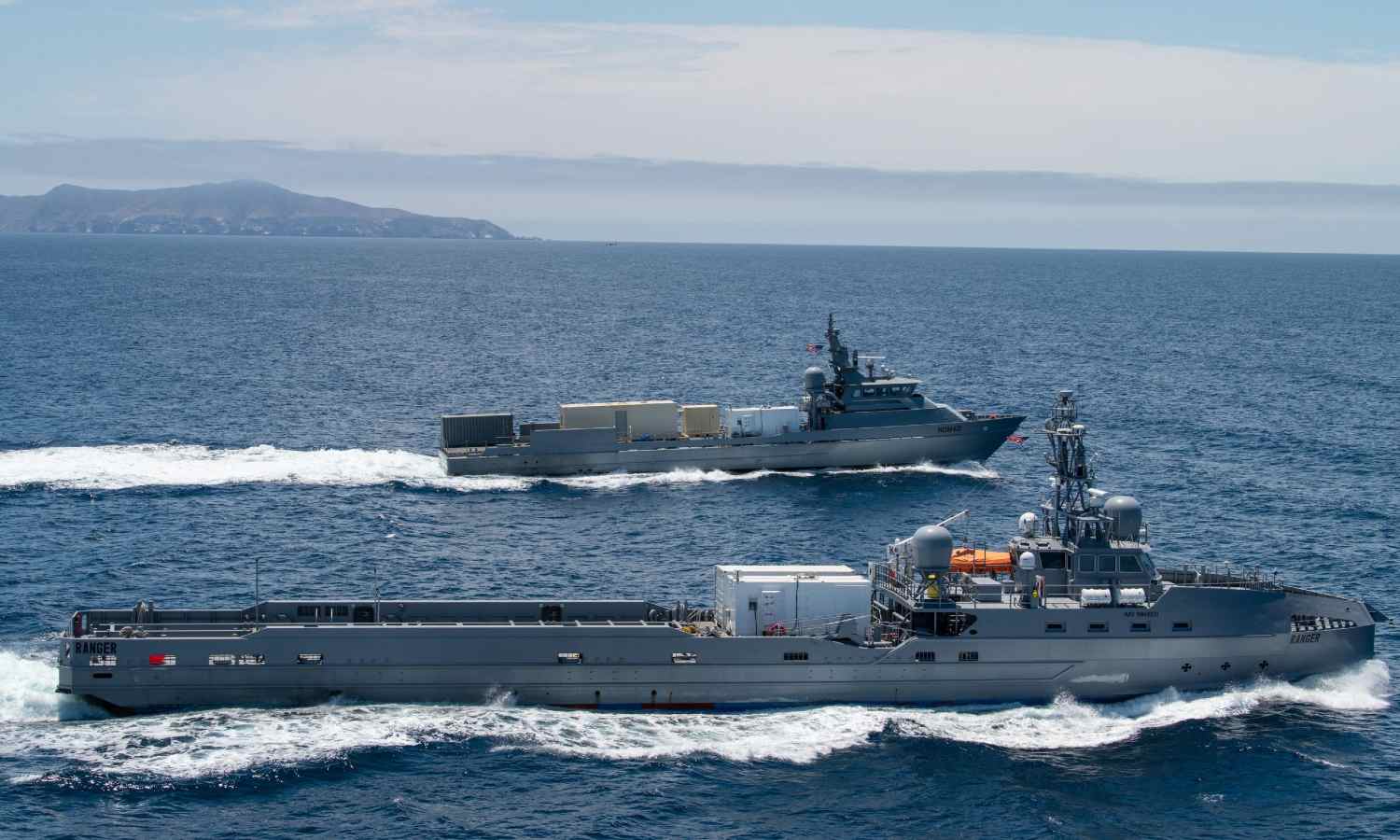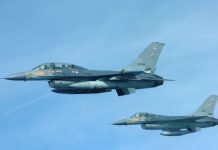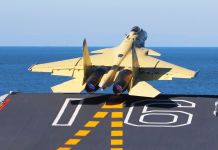Following the destruction of the three Ukrainian kamikaze sea drones by the Russian Navy’s Ivan Khurs ship near Turkey in the Black Sea, new videos have emerged showing one Unmanned Surface Vessel (USV) hitting the ship and another showing it steaming back safely into the harbor with no damage.
‘Better Suited’ Than F-16 Fighting Falcons, Ukrainian Fighter Pilots Could Finally Get Their Hands On JAS-39 Gripens
This is the fourth attack by the menacing kamikaze USVs on the Russian Navy fleet, with the previous three taking place at the Sevastopol naval base in Crimea, home to Russia’s Black Sea Fleet.
The first attack took place in October 2022 with nine aerial and seven sea drones; the second attempt was on March 23 with three USVs, while the attack on April 24 involved only two USVs.
EurAsian Times had reported how Russian naval personnel had been warning about the permanent threat posed by the unmanned boats and expressed apprehension that an attack might also occur on the high seas, with no on-shore naval support.
The latest May 24 attack proved that possibility. Combined with Ukraine’s UAV strikes and sabotage activities inside Russian territory, they have begun to represent an asymmetric threat.
According to Russia’s Ministry of Defense (RuMoD), early morning of May 24 (Wednesday), three Ukrainian drone boats tried to attack the Ivan Khurs ship. The vessel was tasked with guarding the Turk Stream and Blue Stream gas pipelines in the exclusive economic zone of Turkey.
“All enemy vessels were destroyed by fire from the standard armament of a Russian ship 140 kilometers northeast of the Bosphorus. The ship ‘Ivan Khurs’ continues to fulfill its tasks,” RuMoD statement said.
The video released by the RuMoD showed one of the kamikaze Unmanned Surface Vehicles (USV) turning towards the vessel amid tracer rounds going past it and hitting the water.
S-400 Triumf: Russia Assigns New Role For World’s ‘Best’ Defense Systems; Experts Debate Its Performance In Ukraine War
One round then hits exactly the bow and ignites a massive, powerful explosion, indicating the size of the warhead and the amount of explosives the USV must have been carrying.
Interestingly, the Ivan Khurs is a Signals Intelligence (SIGINT) and Communications Intelligence (COMINT) vessel meant to tap, intercept, and decrypt coded radio communications while also providing COMINT and Electronic Support Measures (ESM) to other friendly assets.
New Videos Show USV Hitting Rear of Ship
By late May 25, a new video emerged, showing the perspective from the USV’s front camera, where it manages to reach the rear left side of the Ivan Khurs amid gun rounds hitting the water around it before the feed turns static.
This indicated that the sea drone had hit its target.
A new video has been released showing the moment a Ukrainian naval drone impacts the Ivan Khurs. The damage sustained by the Russian ship is unknown. The Russian Defense Ministry claimed to have destroyed all the drones. https://t.co/vPLRZa0lUc pic.twitter.com/Sk3Zlf2gcH
— Benjamin Pittet (@COUPSURE) May 25, 2023
But by late afternoon on May 25, a new set of videos emerged on social media showing the Ivan Khurs sailing back into Sevastopol harbor. The separate videos that captured both sides of the ship showed no visible damage to the vessel.
Some Twitter users claimed that the images and videos of Ivan Khurs returning to Sevastopol are of the sister ship, Yuri Ivanov, coming into Sevastopol.
All sets of videos, therefore, appear equally authentic. What therefore remains in doubt is the timing of the video of the Ivan Khurs steaming back into port, with some users commenting on the Twitter thread that they could be from last year.
Thus, it appears that the ship was actually hit and had possibly taken some if not massive, damage to the hull.
Multiple undated images showing the Ivan Khurs in Sevastopol are being published by Russian sources on Telegram this morning. https://t.co/31Whk74Og8 pic.twitter.com/1zhrybZhTe
— Benjamin Pittet (@COUPSURE) May 26, 2023
The USV Packed a Punch
However, it is unclear if the USV in the video was the first or the last to be destroyed. But considering the circumstances of the attack, it likely could be the last since the detection of the first two in the early morning hours must have triggered a frenzy across the ship, with the gunnery and watch crew not having time to video record the engagement.
After the first two must have been destroyed, orders must have been issued to record the destruction of the third one, when a crew member possibly pulled out a camera and videographed the engagement.

The video was not from the ship’s electro-optical system, with readings and a targeting reticule, indicating the haste with the phone-shot recording must have been shared with the RuMoD’s publicity department.
In other words, there must have been considerable panic on the vessel upon the USV’s detection, with the mood lasting for the next full day since they must have been expecting a renewed attempt.
Militaries naturally anticipate adversaries to launch probing attacks to identify weaknesses and tire out the defenders.
- The author can be reached at satamp@gmail.com
- Follow EurAsian Times on Google News




